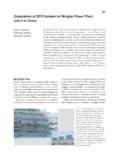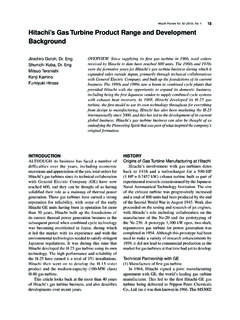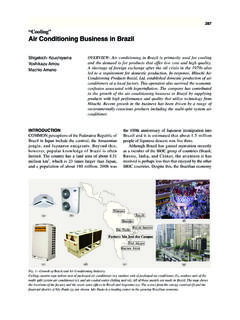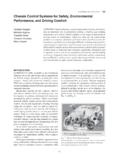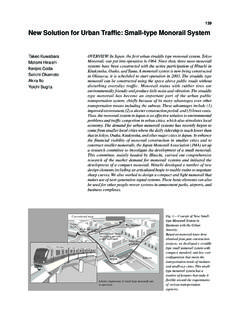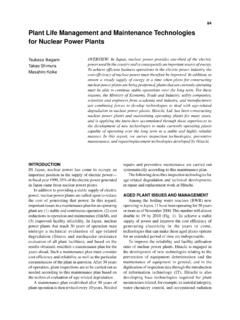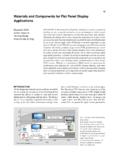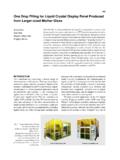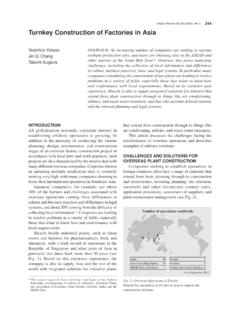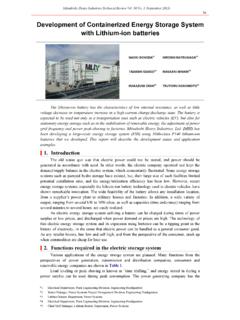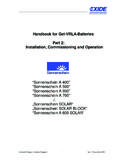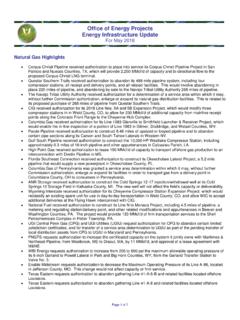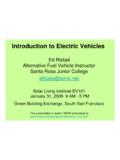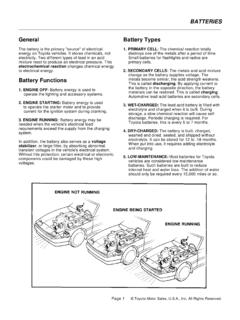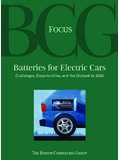Transcription of Automotive Lithium-ion Batteries - Hitachi
1 Hitachi Review Vol. 60 (2011), No. 1 17. Automotive Lithium-ion Batteries Koji Higashimoto OVERVIEW: Activity has been picking up in the fields of hybrid and plug- Hideki Homma in hybrid electric vehicle development because of the role they can play Yasuo Uemura in solving increasingly severe global environmental problems. Hitachi is working on the development of Lithium-ion Batteries , the key devices for Hidemasa Kawai these vehicles. Development of the third generation of cylindrical Batteries Shoji Saibara is now complete and they have been selected for use in hybrid vehicles to be Kensuke Hironaka produced by US firm General Motors Company from 2011.
2 Also currently under development are a fourth generation of high-output Batteries and new prismatic cells for plug-in hybrid vehicles. INTRODUCTION (W/kg) HEV. Output power density (acceleration performance). WITH the need to deal with global environment 5,000 Fourth generation (under development). problems growing in importance, attention is being 4,000. directed toward solutions to the problems of energy PHEV. use. HEVs (hybrid electric vehicles), PHEVs (plug-in Third Development 3,000 generation model hybrid electric vehicles), and other vehicles that use Second In production rechargeable Batteries have been commercialized and generation 2,000 New prismatic cell First their use is rapidly becoming more widespread due to generation (under development).
3 Both their environment performance and economics. 1,000. Although the rechargeable Batteries currently used in most of these vehicles are Ni-MH (nickel metal 0. 0 50 100 150 200. hydride) cells, Lithium-ion Batteries have higher Energy density (endurance) (Wh/kg). output and energy density and their use is growing. HEV: hybrid electric vehicle PHEV: plug-in HEV. This article describes the third-generation HEV. Lithium-ion Batteries selected by General Motors Fig. 1 Improving Performance of Hitachi Automotive Company (GM) for use in their HEVs, Hitachi 's work Lithium-ion Batteries .
4 Hitachi has been working on improving battery output power on the next generation of HEV and PHEV Batteries and energy density through in-house development using currently under development, and the outlook for manganese-based cathode materials as a base. these products. PAST ACTIVITIES First generation 2000. 2000. 2001 2002 2003. 2003. 2004 2005. 2005. 2006 2007 (Year). (HEV). Hitachi has been developing Automotive lithium - ion Batteries since the 1990s and led the world in the production and bringing to market of Batteries with Nissan Motor Co.
5 , Ltd. East Japan Railway Isuzu Motors Limited high performance and long life. Tino Hybrid Company Elf Hybrid NE Train Fig. 1 shows the evolution of battery performance Second generation 2005 2006 2007 2008 2009 2010 2011 2012 (Year). 2006 2007 2007. over successive generations. (HEV). Although energy density and output power density are conflicting performance attributes, Mitsubishi Fuso Truck East Japan Railway Mitsubishi Fuso Truck steady progress has been made through ongoing and Bus Corporation Company and Bus Corporation Canter Eco hybrid Kiha E200 Type Aero Star Eco hybrid development of the active materials that play a key Koumi hybrid railcar role in Batteries .
6 Fig. 2 Electric Vehicles Equipped with HEV Lithium-ion These Batteries have been used in a diverse range Batteries . of vehicles since the release of the first generation Hitachi 's Batteries have been used in a wide range of different and have already built up a market track record vehicles where they have demonstrated a high level of system spanning more than ten years (see Fig. 2). The reliability. Automotive Lithium-ion Batteries 18. second-generation Batteries now in full production of the active material surface.
7 Also, the battery's have an output power density of 2,600 W/kg and have structure was designed to minimize the length of recorded total sales in excess of million cells. the cathode and anode leads and improvements were made to the welding methods to reduce the electrical THIRD-GENERATION HEV Lithium-ion resistance. BATTERY Fig. 3 shows a photograph of the third-generation Hitachi developed its third generation of lithium - battery, Fig. 4 shows a comparison of the input and ion Batteries with high output power and long life to output power characteristics of the second- and improve the performance of HEVs.
8 Third-generation Batteries , and Fig. 5 shows how the output power of the third-generation battery varies Battery Features and Performance with temperature. Table 1 lists the main specifications of the second- Another key objective during battery development and third-generation Batteries . was to improve its calendar life. HEVs require The third-generation Batteries feature a high Batteries with a life of ten years or more. Having output power density of 3,000 W/kg together with excellent battery life characteristics means that the small size and light weight.
9 Materials-based changes aimed at improving the output power included optimizing the proportion of lithium and other metals 6,000. Second-generation Second-generation output power input power in the manganese-based cathode and microstructure Third-generation Third-generation control to reduce the charge transfer resistance 5,000 output power input power Input/output power (W/kg). 4,000. TABLE 1. Main Specifications and Production Status of Second- 3,000. and Third-generation Batteries The main specifications of the second-generation Lithium-ion 2,000.
10 Battery currently in full production and the third-generation battery due to go into production in 2011. 1,000. 10-s input/output power at 25 C. Second-generation Third-generation 0. battery battery 0 20 40 60 80 100. Enters production in SOC (%). Status In production 2011 SOC: state of charge Cell shape Cylindrical Cylindrical Fig. 4 Input and Output Power Characteristics of Second- Improved Cathode material Manganese-based and Third-generation Batteries . manganese-based Anode material Amorphous carbon Amorphous carbon The third-generation battery has an output power density of Capacity (Ah) 3,000 W/kg at a 50% SOC.
